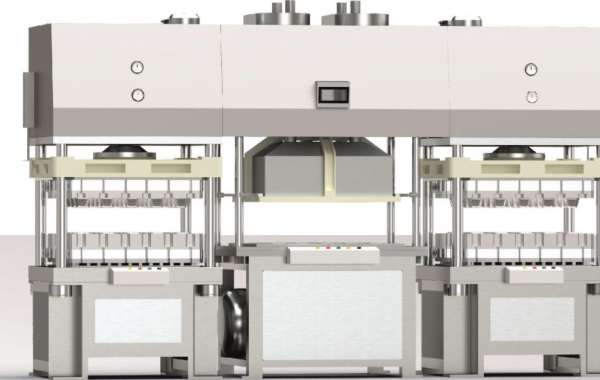The sugar industry is a vast and integral part of the global economy, with a history that stretches back centuries. Sugar, a sweet crystalline substance, is not just a staple in our kitchens; it has played a significant role in the development of cultures, economies, and trade. In this blog post, we will dive into the sugar industry, its history, production processes, environmental impact, and the challenges it faces in today's world.
A Sweet History
The history of sugar dates back to ancient times. The sugarcane plant, native to Southeast Asia, was first cultivated in India around 300 BC. From there, sugar production and consumption spread to China, Persia, and the Arab world. It eventually reached Europe, where it was considered a luxury item during the Middle Ages.
The demand for sugar in Europe drove the colonization of tropical regions like the Caribbean and South America, where sugarcane could be grown on a large scale. This expansion led to the establishment of sugar plantations, and the forced labor of enslaved Africans played a dark role in the industry's growth during the transatlantic slave trade.
Modern Sugar Production
Today, the sugar industry has evolved into a massive global enterprise. Sugarcane and sugar beets are the primary sources of sugar production. Let's take a closer look at the modern sugar production process:
Cultivation: Sugarcane is grown in tropical and subtropical regions, primarily in countries like Brazil, India, China, Thailand, and Australia. Sugar beets, on the other hand, are grown in more temperate climates, including parts of Europe and the United States.
Harvesting: Sugarcane is typically harvested by cutting the stalks close to the ground. Sugar beets are uprooted and then processed to extract sugar from their roots.
Processing: After harvesting, the sugarcane or sugar beets are crushed to extract their juice. This juice is then subjected to a series of processes, including clarification, evaporation, and crystallization, to produce raw sugar.
Refining: Raw sugar undergoes further refining to remove impurities, resulting in the white sugar that is commonly used in households. By-products such as molasses are also extracted during this process.
Packaging and Distribution: The final product is packaged and distributed to consumers, both domestically and internationally.
The Environmental Impact
While sugar is a beloved ingredient worldwide, the sugar industry has raised concerns about its environmental impact. Here are some key environmental issues associated with sugar production:
Deforestation: In some regions, sugarcane cultivation has led to deforestation, which can have devastating consequences for biodiversity and climate change.
Water Usage: Sugar production requires significant water resources, and in areas where water is scarce, this can strain local ecosystems and communities.
Chemical Use: Pesticides and fertilizers used in sugarcane and sugar beet cultivation can lead to pollution of soil and water.
Waste Generation: The sugar production process generates waste, including bagasse (the fibrous residue from sugarcane) and vinasse (a liquid waste). Managing these by-products can be environmentally challenging.
Transportation Emissions: The global distribution of sugar products involves transportation emissions, contributing to greenhouse gas emissions.
Challenges and Sustainability
Recognizing the environmental concerns associated with sugar production, the industry has been working to address these challenges. Here are some sustainability initiatives and practices within the sugar industry:
Certification Programs: Various certification programs, such as Fair Trade and Bonsucro, promote sustainable and ethical sugar production by setting standards for environmental and social responsibility.
Improved Farming Practices: Many sugar producers are adopting more sustainable farming practices, such as reducing pesticide use and optimizing water management.
Energy Efficiency: Some sugar mills generate energy from biomass, utilizing sugarcane by-products like bagasse to produce electricity and reduce reliance on fossil fuels.
Recycling and Reuse: Efforts are being made to find valuable uses for by-products like bagasse, such as using it for animal feed or biofuel production.
Research and Innovation: Ongoing research seeks to develop more efficient and sustainable sugar production methods, including the use of genetically modified crops and advanced biotechnology.
The Sugar Industry Today
Today, the sugar industry faces a complex landscape of challenges and opportunities. The increasing focus on health and wellness has led to concerns about excessive sugar consumption and its impact on public health, including issues like obesity and diabetes. Consequently, there is a growing demand for alternatives like artificial sweeteners and natural sugar substitutes.
Additionally, trade policies, fluctuating sugar prices, and changing consumer preferences all play a role in shaping the sugar industry's trajectory. Sugar producers must adapt to these dynamics while addressing environmental concerns and adopting sustainable practices.
Conclusion
The sugar industry is a significant global player with a rich history, but it also faces pressing challenges in the modern era. As consumer awareness of health and environmental issues continues to grow, the industry must evolve to meet changing demands.
Sustainability, innovation, and responsible production practices will be key factors in shaping the future of the sugar industry. While sugar remains a beloved ingredient in kitchens worldwide, the industry's ability to adapt and transform itself will determine its success in a world that increasingly values health and sustainability. Sweetness will always have its place, but how we produce and consume sugar is undergoing a transformation that will define its role in the years to come.
also see:
Sugarcane Bagasse Pulp Moulding Machine







